How Many Watts Does an RV AC Use? Calculation & Appliances
-
Jeff Weishaupt
- Last updated:
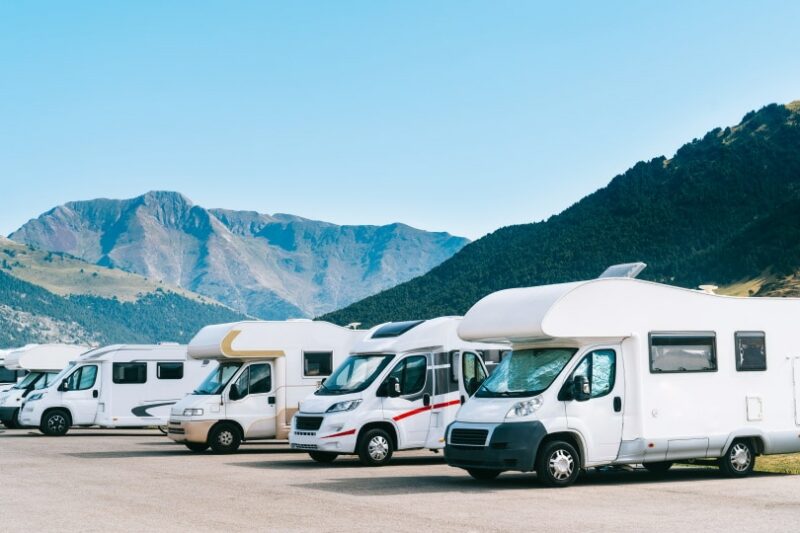
Air conditioners are essential appliances in an RV, especially if you live or plan to travel to hotter areas. You must maintain the temperature inside your vehicle to stay sane throughout the trip. But unfortunately, ACs consume lots of power and energy.
Depending on the size, an RV AC consumes about 700–1,500 watts of power when running. This range can be even higher when the AC starts up. As a traveling enthusiast, you must know your RV AC’s exact power to avoid running out of electricity in the middle of boondocking.
Let’s calculate the amount of power and energy your RV’s AC uses to help you choose the right type of generator for the next trip. We will also go through the power your other appliances use to have a clear insight.
Wattage for an RV AC Based on Its Size
The total power (or wattage) an RV AC uses may vary based on the capacity. It is measured in BTUs (British Thermal Units). If your AC has a higher BTU rating mentioned on its label, it will require more power to start and run.
So, the bigger the AC, the higher its BTU rating will be, and the more power it will require. For instance, a standard RV AC has a BTU rating of 13,500–15,000 with a running wattage of 1,300–1,500 watts. The starting wattage ranges from 6,000–7,000 watts.
In contrast, if you have a bigger Class A RV, it’ll require more capacity and power to work. These RVs generally have a 27,000 BTU rating and a running wattage of 3,000 watts.
Here is a breakdown of the average power different sizes of RV ACs consume. We have included the capacity of each size in BTUs to help you understand easily.
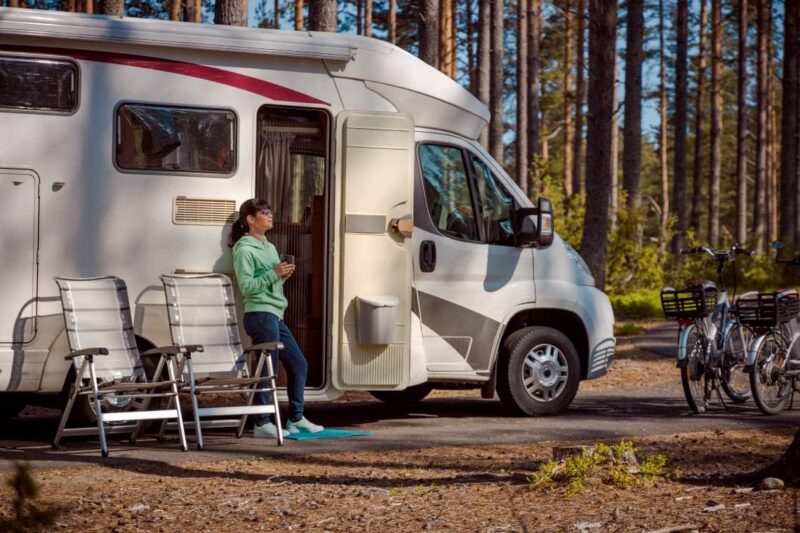
| BTU Rating | Avg. Running Power (W) | Starting Power (W) | Avg. Current at 115-130 V(AC) (A) |
| 7,000 | 700 | 2,500–3,500 | 6 Amps |
| 10,000 | 1,000 | 4,000–5,000 | 9 Amps |
| 13,500 | 1,400 | 5,500–6,500 | 12 Amps |
| 15,000 | 1,500 | 6,000–7,000 | 13 Amps |
| 27,000 | 2,700 | 11,000–13,000 | 24 Amps |
Note: The “starting wattage” refers to the power an AC requires when starting. It is usually way higher than the running wattage, lasting for less than a second. But since it affects your total power consumption, consider this surge is important.
How to Calculate the Power of an RV AC
Now that you know the capacity and wattage of different RV ACs, it’s time to determine how much power your RV’s AC uses. Here are a few methods to help you get started:
1. Check the Specs Label on Your AC
Almost all RV ACs have a spec label with all the necessary information about the power and energy requirements. If yours doesn’t have it, you can look for the amperage and voltage and calculate the power quickly.
The standard voltage in the US ranges from 115–130 volts, and the amperage depends on the appliance’s size and model. If you can’t find the amperage, search for “Full Load Amps (FLA)” or “Compressor Rated Load in Amps.”
After finding both Voltage and Amperage, you can calculate the wattage by putting the values in the power’s standard formula. It looks like this:
Power (W) = Amperage (A) x Voltage (V)
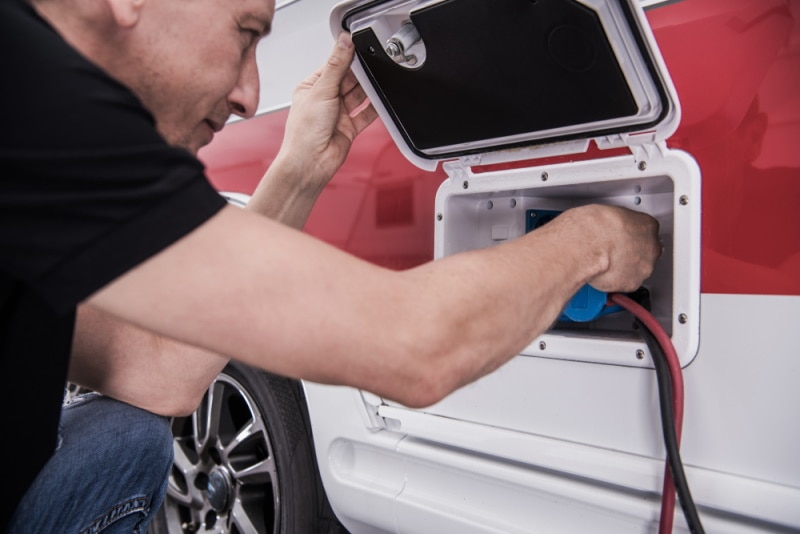
2. Look for the EnergyGuide Label
If you have an American-made RV, it will have all the appliances with a yellow EnergyGuide label. For ACs, these labels have the BTU rating and the Energy Efficient Ratio (EER) mentioned.
Suppose your AC’s EnergyGuide label says 10,000 BTU capacity and 10 EER. In such a case, you can easily calculate your AC’s total power consumption through this formula:
W = BTU / EER
W = 10,000 / 10
W = 1,000 Watts
Remember that not all AC manufacturers mention the EER on EnergyGuide labels. But generally, it is around 10 in most RV AC. So, if you can’t locate the label on your AC, you can simply divide its BTU rating by 10 to get an estimated power consumption amount.
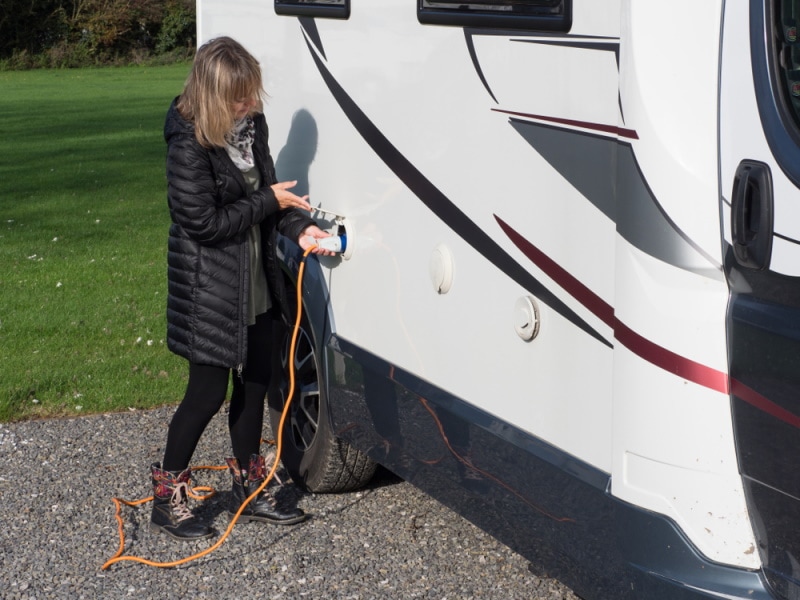
3. Buy an Electricity Usage Monitor
You can buy a power measurement tool if you don’t want to involve yourself in numbers and figures. These gadgets calculate the power and energy consumption of different appliances within a few minutes.
One such device is the “Kill-A-Watt,” a handy measurement tool that gives accurate results. Also, the tool can save you time if you’re planning to estimate the power consumption of all appliances installed in your RV.
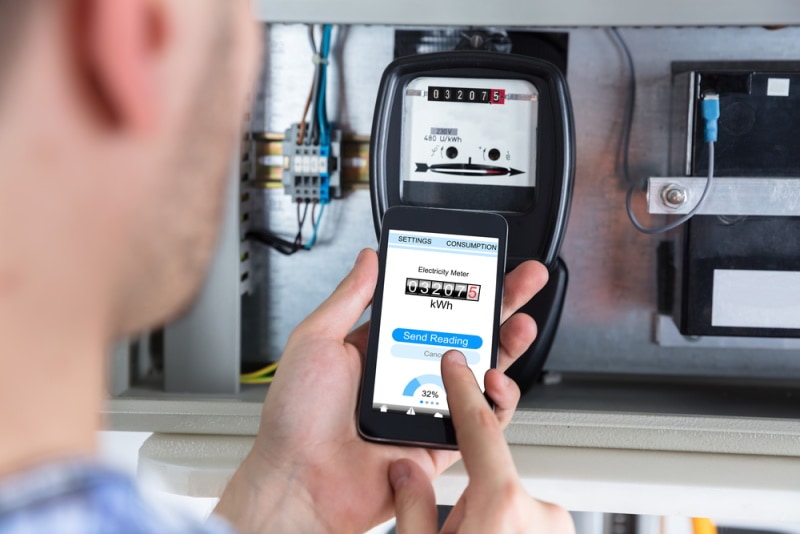
How to Calculate the Energy Consumption of an RV AC
The total energy consumption of an RV AC depends on its running wattage, and the time it’s been working. Generally, an average RV AC consumes 1–1.5 kWh of energy each hour. However, it could vary based on the temperature outside.
Let’s say it’s summer, and you have been running your AC the entire day. It will most probably consume about 30 kWh of energy daily. If the thermostat is set at 70°F, the total energy consumption per hour will depend on the outside temperature and how long the AC has been left on.
Remember that an AC doesn’t run all the time when you leave it on. As you start your RV’s AC, its compressor keeps running until the appliance reaches a set temperature. After that, it turns on and off to maintain the desired temperature in the vehicle.
The amount of time a compressor stays on is called Duty Cycle, which is expressed in the percentage. For example, at 80°F–95°F temperature, an AC’s duty cycle is between 70%–90%.
When the temperature gets above 95°F, the AC will likely run all the time. Meanwhile, when the temperature drops at night, the appliance will run about 50%–70% of the time to maintain the set inside temperature.
It’s easier to calculate the energy consumption of your RV AC depending on the time it’s been left on. Here are two ways:

When the AC Is on 24/7
If you keep your AC on for 24 hours, it will run for 80–90% of the total time. This equals 19–22 hours in a day.
We can assume that the AC is on or working for 21 hours daily. Depending on this estimation, the daily energy consumption can be calculated as follows:
Energy (kWh) = Running Wattage (kW) x Duration (hours)
Energy = 1.5 x 21
Energy = 31.5 kWh
When the AC Is On for a Limited Time
If you use the AC for a limited time, you can calculate its energy consumption by its run time. However, remember that the actual running time of an AC depends on the duty cycle that varies with the temperature.
Let’s assume the outside temperature is 85°F and the duty cycle is 80%. You run the AC for 7 hours a day. So, your daily energy consumption would be:
Energy = Running Wattage (kW) x 7 hours x Duty Cycle (%)
Energy = 1.5 x 7 x 80%
Energy = 8.4 kWh
Note: These are only estimates, so the total energy consumption of your RV AC can be a little higher or lower.
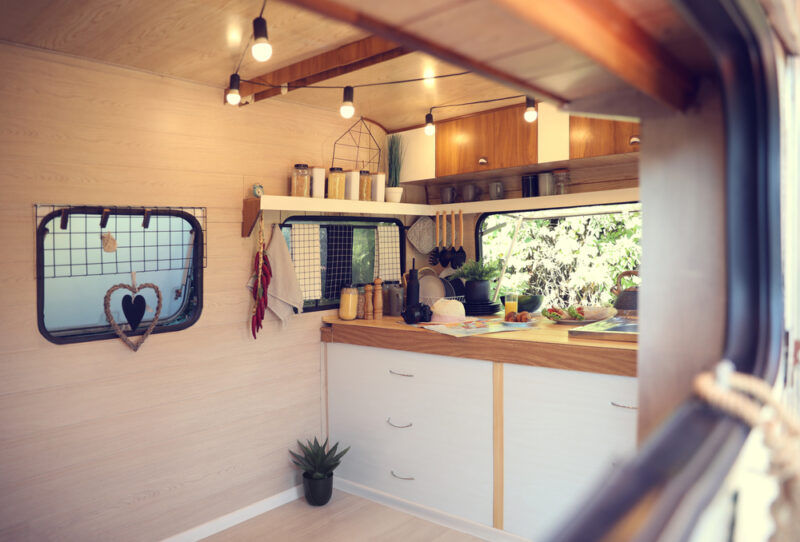
The Power Consumption of Different RV Appliances
If you’re worried about the daily load on your generator, you must also consider the power consumption of different appliances installed in your RV. These include TV, refrigerator, microwave, radio, laptops, lights, etc.
You can calculate the power consumption of all through the methods mentioned before. But if you’re short on time, here is a quick breakdown of the power consumption of common appliances installed in an RV:
| Appliance | Starting Wattage (W) | Running Wattage (W) |
| Fridge | 600 | 180 |
| Small TV | 120–200 | 120–200 |
| DVD Player | 350 | 350 |
| Radio | 50–200 | 50–200 |
| Electric grill | 1,700 | 1,700 |
| Microwave | 1,000 | 1,000 |
| Small Portable Fan | 120 | 40 |
Of course, an AC is larger than all the above-mentioned appliances. This is why it has a higher BTU rating and power and energy consumption rates. But don’t forget to consider all these appliances when buying a generator for your RV.
Conclusion
An RV AC consumes lots of power and energy since it’s a large appliance. On average, a medium-sized AC uses 700–1,500 watts of power when running, which could be higher than its start-up wattage.
The power and energy consumption of an AC depends on various factors. For instance, the larger the appliance is, the more BTU rating it will have and the more power it will need to work. On the other hand, the energy consumption varies with the outside temperature, duration, and running time of an AC.
Make sure to check every important point mentioned above before buying a generator for your RV.
- https://www.renewablewise.com/how-much-power-does-rv-ac-use/
- https://campergrid.com/rv-air-conditioner-watts-usage/
- https://reviewround.com/how-many-watts-does-an-rv-air-conditioner-use/#:~:text=RV%20air%20conditioners%20are%20known%20to%20take%20up,to%20draw%20above%20double%20this%20amount%20of%20power.
Featured Image Credit: Pol Sole, Shutterstock
Contents
